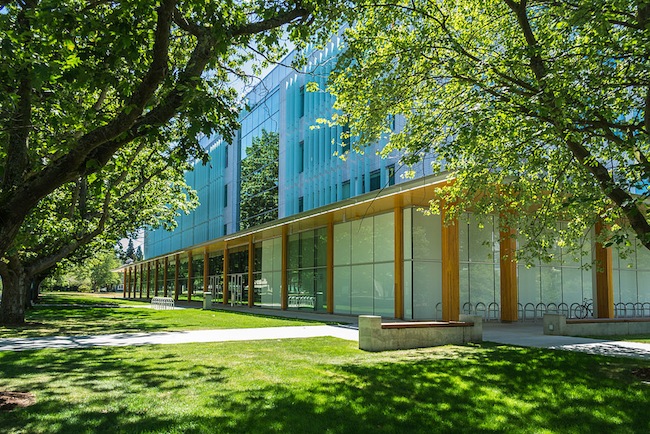The wood-industry advocacy group reThink Wood has released "Summary Report: Survey of International Tall Wood Buildings." Conducted by Perkins + Will for Forestry Innovation Investment and the Binational Softwood Lumber Council, the free report summarizes stakeholder experiences with 10 built projects in Europe, Australia, and Canada, including commercial, residential, mixed-use, and institutional facilities of five to 10 stories.
In particular, the report stresses characteristics of owners and Building Teams that are necessary for success in building tall with wood, including a high level of initial commitment, planning, collaboration, and holistic innovation.
Stakeholders are usually motivated by a desire for innovation, market leadership, and carbon reduction, with dual objectives of energy efficiency and healthy indoor environments. The existence of supportive government policies was an important factor in the acceptance of mass timber solutions for many of the profiled projects.
The report also acknowledges the need for additional refinements to allow timber to become a common solution for tall buildings. Issues and strategies for technical challenges are discussed, including the topics of structure, lateral stability, fire protection, acoustics + vibration, systems integration, moisture protection, and durability.
Click here for a complete report download.
Related Stories
| Aug 9, 2022
5 Lean principles of design-build
Simply put, lean is the practice of creating more value with fewer resources.
| Aug 9, 2022
Designing healthy learning environments
Studies confirm healthy environments can improve learning outcomes and student success.
Legislation | Aug 8, 2022
Inflation Reduction Act includes over $5 billion for low carbon procurement
The Inflation Reduction Act of 2022, recently passed by the U.S. Senate, sets aside over $5 billion for low carbon procurement in the built environment.
| Aug 8, 2022
Mass timber and net zero design for higher education and lab buildings
When sourced from sustainably managed forests, the use of wood as a replacement for concrete and steel on larger scale construction projects has myriad economic and environmental benefits that have been thoroughly outlined in everything from academic journals to the pages of Newsweek.
AEC Tech | Aug 8, 2022
The technology balancing act
As our world reopens from COVID isolation, we are entering back into undefined territory – a form of hybrid existence.
Legislation | Aug 5, 2022
D.C. City Council moves to require net-zero construction by 2026
The Washington, D.C. City Council unanimously passed legislation that would require all new buildings and substantial renovations in D.C. to be net-zero construction by 2026.
Cultural Facilities | Aug 5, 2022
A time and a place: Telling American stories through architecture
As the United States enters the year 2026, it will commence celebrating a cycle of Sestercentennials, or 250th anniversaries, of historic and cultural events across the land.
Sponsored | | Aug 4, 2022
Brighter vistas: Next-gen tools drive sustainability toward net zero line
New technologies, innovations, and tools are opening doors for building teams interested in better and more socially responsible design.
| Aug 4, 2022
Newer materials for green, resilient building complicate insurance underwriting
Insurers can’t look to years of testing on emerging technology to assess risk.
Sustainability | Aug 4, 2022
To reduce disease and fight climate change, design buildings that breathe
Healthy air quality in buildings improves cognitive function and combats the spread of disease, but its implications for carbon reduction are perhaps the most important benefit.

















